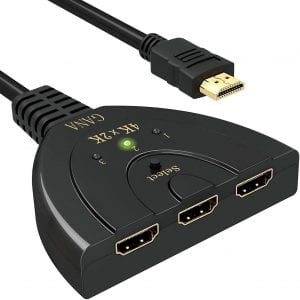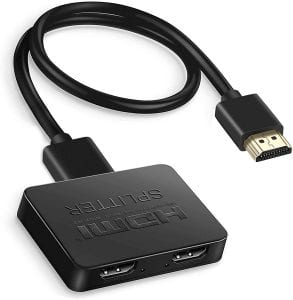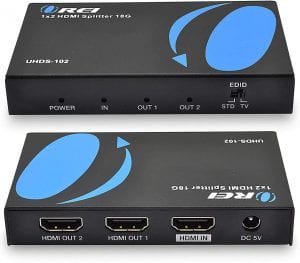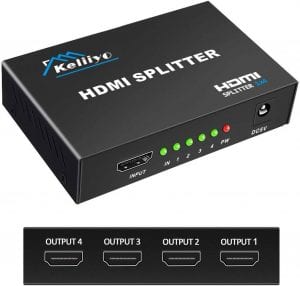The Best HDMI Splitter
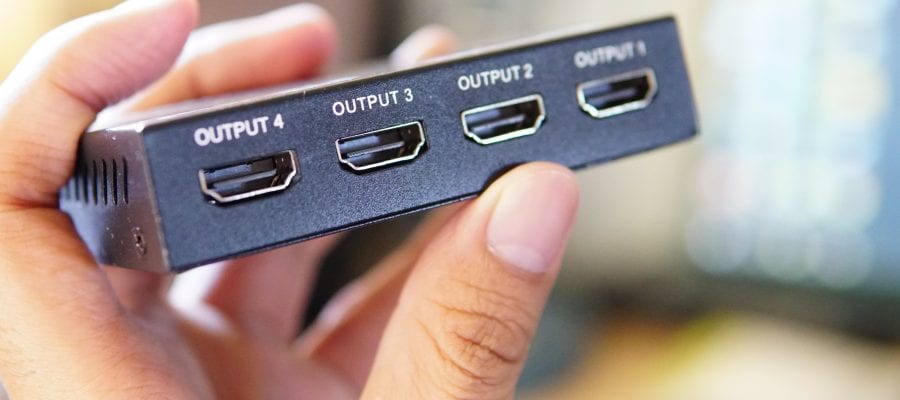
Our Review Process
Don't Waste Your Money is focused on helping you make the best purchasing decision. Our team of experts spends hundreds of hours analyzing, testing, and researching products so you don't have to. Learn more.
Our Picks For The Top HDMI Splitters
Featuring three input ports and an easy-to-operate sequential toggle, this HDMI splitter lets you easily switch between multiple game systems or computers and cable or other video sources. Even at a high-speed, 4K/3D/deep color output, this device requires no external power source.
Three-Input EaseIf you live a media-rich life and are tired of dealing with cables, this three-input HDMI splitter will keep things simple.
This HDMI splitter lets you display the same 4K Ultra HD or 3D output flawlessly on two devices at once. With support for HDMI v1.3/1.4, the tool can carry deep color and supports a variety of audio formats. The package includes the splitter, a high-speed HDMI cable, the user manual and a micro-USB cable for the power source.
Double Output OptionPerfect for playing a game or movie across different rooms, this HDMI splitter simplifies setup and lets you focus on enjoying your media.
Buying Guide
With the proliferation of media devices and interconnectivity, we all need a way to manage multiple inputs and outputs such as game consoles, TVs and LCD screens, computers, cable and streaming boxes, casting devices and other media devices. However, many modern TVs and LCD monitors come with only one or two HDMI input ports. This is where HDMI splitters and HDMI switches come in.
HDMI splitters and switches are capable of taking multiple inputs and converting them to a single output, or taking a single input and split it into multiple outputs all without losing signal quality or speed. They eliminate the problem of constantly switching cables and simplify the setup and associated cable needs of multiple devices.
The first consideration with an HDMI splitter is how many inputs and outputs you need, and in which direction. Individual households usually need multiple inputs and one output that they can switch between. Venues like conference centers and sports bars often need a way to split a single input, such as a slide deck on a computer or a sports game on cable, across multiple output devices. Some HDMI splitters feature as many as 16 outputs.
Another consideration is whether the HDMI splitter itself needs an external power source. Some models draw their power from the signals they handle, while others require an external power source. Some splitters that don’t require an external power source do need at least two input devices to be on, while splitters that need an external power source add an extra cable to the equation.
What to Look For
- Check the HDMI version number not just on the HDMI splitter, but also on the input and output devices and even on the cables. Modern HDMI devices and cables can carry 4K, 3D and deep-color video data and HD audio, but if the cables, splitter or input/output devices are older or of the wrong version number, they may not be up to the task.
- HDMI versions are backwards-compatible. While newer version numbers are often required for the crispest quality on newer inputs, older systems should be compatible with new ones with no extra effort.
- While many small and sleek HDMI splitters are attractive for their size and portability, don’t discount the bulkier devices. They are often larger because they provide cooling, allowing them to handle many outputs simultaneously without losing quality or speed.
You May Also Enjoy Our Other Reviews
- Robotic Vacuum
- Cordless Vacuums
- Air Mattress
- Drone
- Electric Razor
- Convertible Car Seat
- Infant Car Seat
- Dry Dog Food
- Carpet Cleaners
- Air Fryers
- Laptops
- Home Printers
- Wireless Router
- Streaming Device
- Electric Pressure Cooker
- Chromebook
- Television
- Digital Camera To Capture Special Moments On The Fly
- Smartwatch
- Upright Vacuum


